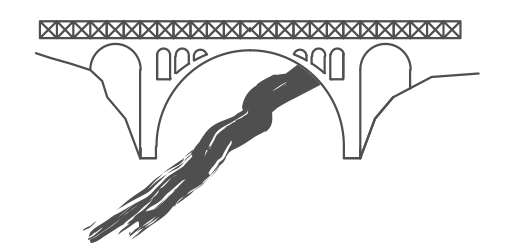Mesochora has an important and painful history. Many tragic events have marked the course of this place.

The original name of Mesochora was “Vytsista”, a name of Slavic origin, which means west, because it is said to have been built and spread west of the pre-existing settlement, which was called Paliohori. According to historical sources, the Slavs have passed through the area during the 7th to 8th century AD. The Slavic names of many other neighboring villages in the area, such as “Dovroi”, “Sklivaino”, “Grevenoseli”, “Myrokovo”, “Kornesi”, ”Plop”, testify to their existence, settlement and passage.
As for antiquity, the surviving testimonies are few and unexplored until today. However, there are indications of the existence of historical and prehistoric settlements in this area. From time to time, experts have pointed out characteristic sites of Mesochora and it has been decided by the Hellenic Ministry of Culture to carry out excavations (such as the one in August 1996). Τhe first findings testify to the existence of a settlement from the Hellenistic times.
Historical sources and mythological elements state that Mesochorites, in all probability, are considered descendants of the Greek ancient tribe of Athamanians.
The modern history of Mesochora is full of important incidents and events. The trumpets of war sounded louder here. In the Greek War of Independence in 1821, Mesochora and the wider region played an important role. They belonged to the chariotry of Aspropotamos led by N. Stournaris. And in the recent past, the place was marked by many traumatic adventures. During 1912-13 and 1916-17, in the Asia Minor Catastrophe, the Occupation, but also afterwards, in the era of the Greek Civil War, it mourned, unfortunately, many losses. Because of its strategic location, Mesochora had become the center of battles and bloody clashes. Aris Velouchiotis had set up his command post in Mesochora. In 1943 the village was almost completely burned by the Germans. Its inhabitants, however, who survived the wars and terrible hardships, never left it. Instead, they restructured it and put the village back on its feet. The same happened later in 1967, after a strong earthquake which once again turned the village into ruins.
The new name “Mesochora” appears from 1928 onwards. The Mesochorites believe that the State’s decision to rename it was correct and that name fits better (it means the middle of the country). It expresses a reality since it is a large capital village located in the center of a large mountainous region with radially scattered other smaller villages.
In comparison to the other villages in the wider area, it is quite bigger in terms of its area and population. From 1881 until 1911 (30 years), Mesochora was the seat of a Municipality and the administrative capital of the area.



